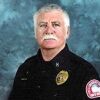When you first learn you have cancer, your emotions are in a ball. No direction, no dimension and no measurement – just an entire planet of feelings. But once the confusion and disbelief cease to cloud your mind, it is time to decide how you are going to handle a difficult but hopefully long highway. Isn’t it time to apply what you learned as a firefighter to your responsibilities as a patient and, more importantly, a survivor?
Finding connections and similarities
We come from a paramilitary organization. We have captains, lieutenants and firefighters, and your team at the cancer center is organized in much the same way with a hierarchy of support:
- Your team leader is likely the doctor specific to your treatment; this person is like a battalion chief. There is one for your radiation team, one for your chemotherapy team, and so on.
- Physician assistants are your line captains coordinating group response.
- Nurses can be thought of as lieutenants responsible for carrying out orders from above.
- Technicians and assistants are the firefighters busy with everyday operations, with senior techs handling radiation equipment and junior techs taking vitals.
Both your firefighting crew and your cancer team wear uniforms and carry equipment and badges specific to their rank.
Another similarity between firefighting and cancer-fighting: the power of organization. Do you remember where the heat gun is on the engine and the location of the spreader batteries on the truck? Over the years, we’ve been involved in countless response reports, equipment requests and maybe even employee evaluations. Then there are the maintenance schedules, crew assignments and special events, like July 4 and Fire Prevention Week.
Treatment is similarly busy, requiring tracking. Drugs must be ordered and taken at a particular time. Chemotherapy demands following an ongoing schedule, as do evaluations, scans of all types and, in many cases, transportation. There are medical appointments and meetings on various subjects from pain management to family interaction. What seems overwhelming at first can be controlled in the same way that you approached a shift. What’s on the schedule, who is responsible, and have I anticipated both?
When organization is finally in the command-and-control mode, thanks to your focus and determination, the next commonality is teamwork. No one firefighter saves a life or protects the property in your area. It takes a group of individuals with various assignments, working together, to achieve fire, medical or accident scene success.
The same is true of the cancer center and its members. Each team member is assigned a different task based on functional rank, coming together to minimize pain and advance overall health within the parameters of a constantly changing disease. And like the fireground with its purposeful collaboration, strategy and tactics are continually being evaluated and modified when it comes to treatment options and their application – teamwork at its very best.
As you can imagine, leadership plays a big role in your treatment decisions, beginning with you. While you may not “outrank” anyone at the cancer center, you are at the forefront when it comes to approach and decision-making. The rest is simply a matter of trust and performance.
Sound familiar? Advancing hoses to the front door, the officer finishing their 360, a ladder crew waiting orders for a B side throw, rescue and RIT teams assembling. What makes you a great firefighter and, more importantly, a team player who is appreciative of the collective synergy needed for a safe and successful extinguishment, is the role of trusted leadership at every level of assignment. The same is true of you and your treatment team.
Each person on your treatment team must reflect the confidence and ability to carry out their assignment and you must believe they can. From a nurse at your chemo chair hooking up myriad tubes and bags, to the technician pinpointing body locations for a successful radiation application. These are the leaders and crew assignments needed for a successful knockdown.
One area of commonality that may seem more obvious is that of education and training. Remember what it takes to be a competent and then extraordinary firefighter: the dog-eared pages of the Essentials book, the summer sweat from constant drills in full bunkers, and testing on and off the asphalt apron. The same amount of work, if not more, can be applied to your treatment schedule and those who follow it.
While your education comes as needed with the progression of the disease, imagine the amount of training and experience needed by the doctors, nurses and techs surrounding every scan, chemo stick and, yes, every gut-wrenching moment spent in evaluation and outcomes. The amount of brain power needed and focused on just one patient makes an old firefighter smile.
Finally, what is really shared is family. Outside your own circle of friends and relatives, you will never feel a more familiar environment than that of the cancer center. Familiar not by the machines and equipment designed to keep you alive, but in the men and women who make you feel successful every day of treatment – a cheerful hug, a concerned smile, and the constant and somehow reassuring question of “how yer doin?”
While this may seem like an obvious and flourishing demeanor, it is not. Like the approach you take with some of your relatives at Thanksgiving, you must realize that in the cancer world, every caregiver, doctor, physician assistant, nurse and tech is different, and yet somehow they all come together to fully participate in your journey of a long and winding road. This can only be the love that comes from family.
Dedicated to the men and women of the Shaw Cancer Center Team in Edwards, Colorado,




